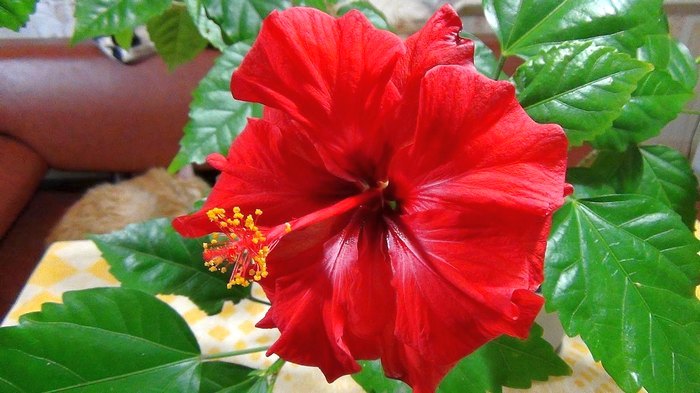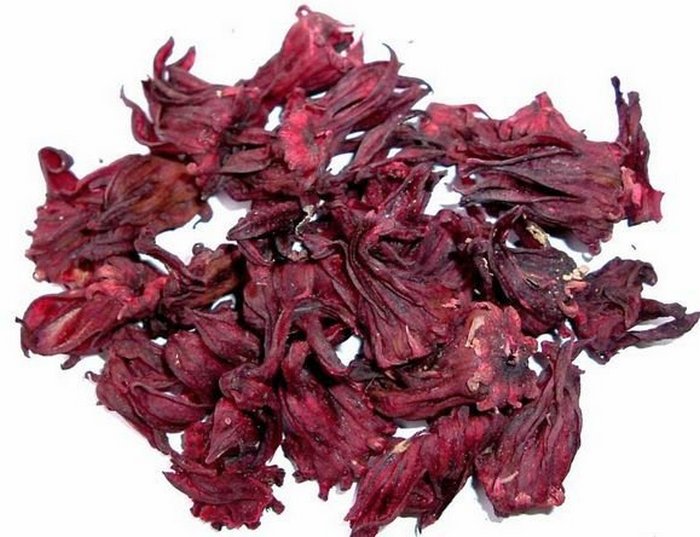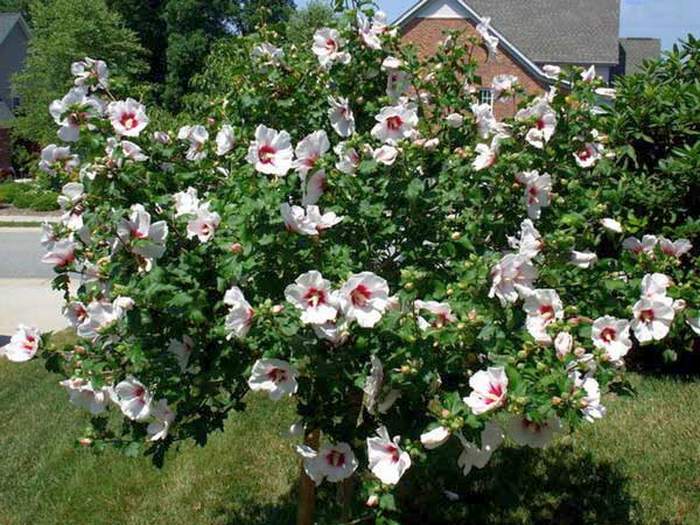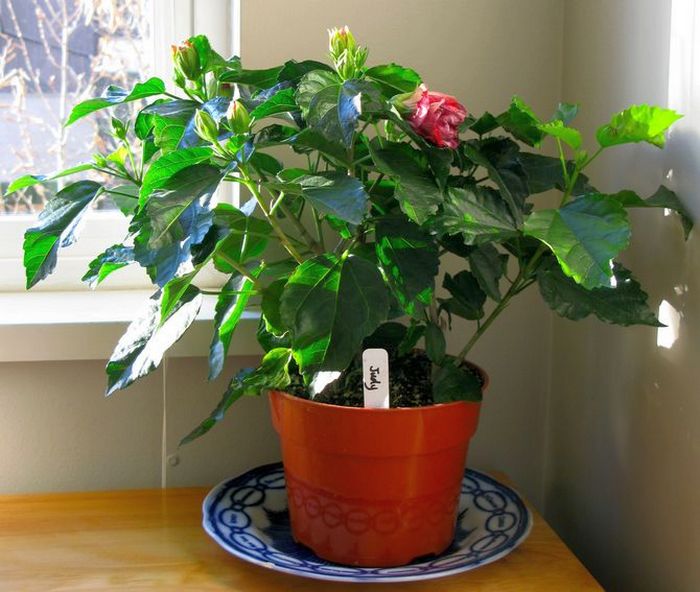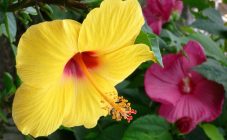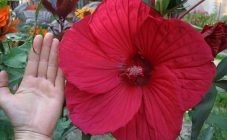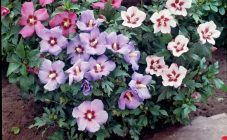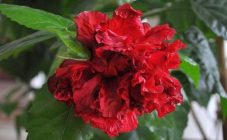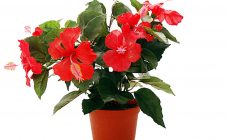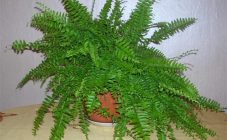Content:
Hibiscus belongs to the Malvaceae family. The most common is the ennobled wild type of bush or tree. It does not get along in northern climatic conditions, therefore in these countries hibiscus is a home flower, grown indoors. In warm weather, it must be taken out into fresh air and sunlight.
general information
The first hibiscus flowers appeared in tropical Asia and southern China. In an area with a mild tropical climate, you can grow a Chinese homemade rose in the open field. In the Hawaiian Islands, the flower belongs to the national plants. Locals call hibiscus “the flower of beautiful women”.
The geographical location of the Chinese home rose is great: the Far East, the southern side of Ukraine, Crimea, regions of the Caucasus, Germany and many other countries.
Scientists have counted about 300 species of home rose plant - in the form of a tree or a shrub. Each species is different in shape, color and size.
The plant can be in the form of a grass, shrub, or tree. The most common and not whimsical is the home rose tree, the height of which reaches three meters. The leaves are large, oblong, dark green in color. The hibiscus bud is large, the color range of the blossoming rose is extensive from white to bright red.
Medicinal properties of Chinese tea rose:
- The pectins, flavonoids, anthocyanins and phytosterols contained in the plant help to strengthen the walls of blood vessels and significantly lower cholesterol levels.
- The flower is able to stop bleeding and various inflammatory processes, it is often used to treat watery ulcers.
Why is a rose called a tea room?
Dried hibiscus flowers are used to brew healthy hibiscus tea.
Its medicinal properties are:
- strengthening the immune system;
- destruction of parasites and microbes in the human body;
- restoration of blood pressure;
- help from a hangover syndrome;
- sedative effect.
Benefits for the body:
- with prolonged use, it fights infertility;
- great for losing weight;
- has mild laxative properties;
- fights high fever.
The most common trees or deciduous shrubs with green foliage are found in all seasons. The bare and smooth trunk of a hibiscus grows up to three meters in height. Foliage grows on petioles. The colorful flower grows up to 30 centimeters in diameter.
The hibiscus tree bears fruits in the form of small bolls with five decaying leaves. The seeds are fibrous, and in some varieties the seeds are bare.
Hibiscus varieties
- Syrian treelike hibiscus. Became popular with gardeners for its colorful large flowers. The Syrian rose hibiscus is planted to replace a simple fence with a hedge or to decorate a front garden. The plant needs to be regularly watered and impregnated with microelements before and after planting.
- Swamp hibiscus. Large bright inflorescences at the base of the corolla have carmine spots. If you follow the care instructions, the plant will bloom throughout the year. It is also popular for hedges.
- The most common and beautiful are chinese yellow rose... Houseplants are less whimsical.The Chinese flower has large oval leaves with dark green denticles along the edges. The house plant in the form of a tree blooms for six months. Large inflorescences of bright colors do not fall for two days. Bright red blooms are more common, as well as many other shades: white, pink, yellow or orange.
- Hibiscus flower terry with large white inflorescences that fade in one day. This perennial plant with green leaves requires constant watering and bright lighting.
- Crazy Rose - changeable hibiscus. Its blossoming flowers are very beautiful and resemble rosebuds. In the process of flowering, they change their color, when blooming, the flower is white, and at the end of flowering it becomes crimson. Hence the name "crazy rose" or fickle hibiscus.
- Hibiscus Red-leaved. The root system is mixed. It is grown from seeds. The leaves of the plant are oval in shape with a red-green, burgundy or bronze tint. The diameter of the flowers reaches 10 centimeters and has a pink or wine-red inflorescence shade.
Plant care rules
Growing indoor hibiscus at home is easy, it must be planted in a pot and replaced as needed during the growth of the plant. It is stable and does not require a separate planting room. It grows quickly, and with good care, it blooms profusely and for a long time, even in the cold season.
You don't need to take special care of hibiscus at home, but you also don't need to neglect the basic rules for caring for it:
- Good natural and artificial lighting. Hibiscus grows well in scattered light. In a warm season it is better to put it on the west or east side of the window. The plant is harmed by direct sunlight.
- Regular watering and spraying of foliage. In the hot summer season, watering is necessary in the morning and in the evening, and in cold weather once a day will be enough. Abundant watering is also required during flower growth and during flowering. Water must be defended, it must be soft. Spraying helps save the flower from the spider mite.
- Keep away from drafts. The ideal indoor temperature for hibiscus to grow well is between 18 and 25 degrees. Blossoms will be less frequent without sunlight. At temperatures below 10 degrees, the plant stops blooming and sheds foliage.
- The soil for good growth and flowering of bush hibiscus, you must use loose and breathable. Be sure to pour drainage on the bottom of the pot. The composition of the soil mixture should contain leaf and sod land; peat; sand and humus.
- An equally important condition is regular soil feeding during the growing season. Once every 14 days, water the flower with water with the addition of mineral fertilizers.
- In the spring, it is required to cut off excess shoots and lower leaves, as well as transplant into a spacious pot. Choosing the right pot will allow your hibiscus to grow better and faster.
In low light, hibiscus does not bloom. Fertilizing the plant in winter is required less often and only after abundant watering. The temperature for winter should be between 14 and 16 degrees.
Hibiscus propagation is carried out in different ways
- Propagation by cuttings. They are cut in the warm season from the upper young growths. Reproduction in this way allows the plant to take root in 30 days in water or after planting in small pots covered with a glass lid.
When the roots appear, the layering is planted in a 10 cm flower pot. A good recipe for fertile soil is to make a bone meal supplement.
- Planting several plant varieties by cuttings is not possible. If there is a desire to get new types of plants, then the seeds are sown directly into the ground. This is done in the first quarter of the year. The temperature of the earth should be from 25 to 27 degrees, and before planting, the seeds are soaked for 12 hours in warm water.
Common plant injuries and pests
If a garden or houseplant is not properly cared for, it can get sick and die.
The main causes of death of flowers and methods of their elimination.
- Pests appear in weak plants that do not have enough watering and feeding. To get rid of them, it is necessary to carry out the treatment with a special solution or simple diluted laundry soap.
- Fungus and root rot are caused by excessive watering, drafts and poor lighting. In this case, it is required to treat the plant with fungicides, remove diseased leaves and limit the amount of watering.
- Leaves turn yellow: with a lack of iron or an excess of calcium, chlorine and fluorine; high soil moisture and cold air ingress. The plant will return to its previous appearance, with a reduction in the amount of watering and, if you additionally feed it with iron sulfate, after which it is necessary to put the flower in a warm place without drafts.
- If the plant does not bloom, then it is required to revise the temperature regime and the quantitative content of nitrogen in the fertilizer, it should not be in excess.
- With a sharp change in climate, leaf fall begins and the buds die off.
It is easy to grow a Chinese rose at home if you take into account all the features of the plant and follow some of the instructions for caring for it.
